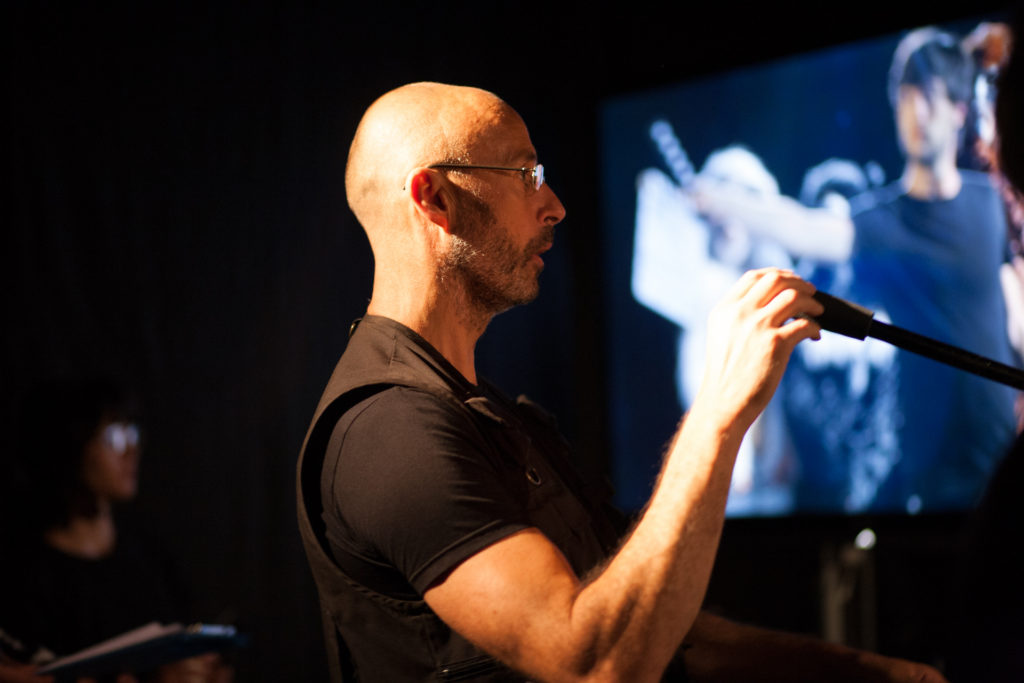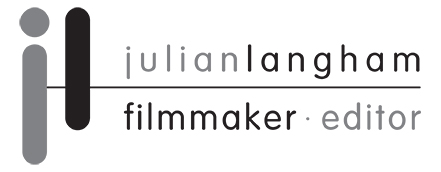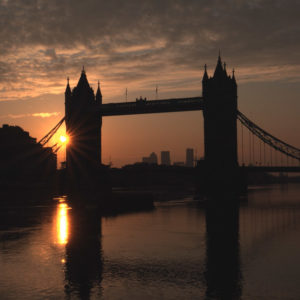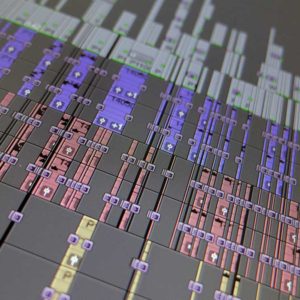Working as Director of Photography I was commissioned to lead a small crew on the production of an art-house style film. In this case study, I give a brief overview of the project.

Filming a short film at Elephant Studios
The project was to be filmed at London South Bank University (LSBU)
Recce and rigging the studio lights
I discussed the project in detail with the film Director and LSBU lecturer Marko Waschke. To gain a better sense of how the filming would work at the Studio we carried out a recce of the studio area and facilities. We also checked out all best access routes so that we could work out how best to deliver all the production kit and props.
The first booked day in the studio was dedicated to getting the filming kit and props on location and the lights all set up. The studio came equipped with a wide range of lighting. For this shoot, we set up 2 x 1K Fresnels in two of the corners on large height geared adjustable stands and 4 x 650-watt Fresnels. The lights were each connected to the ring main, via a dimmer unit, so that they could all be fully individually adjusted during the shoot.
Blacking out the studio
With the lights set-up, connected and in position, we set about ensuring that the whole studio surround was blacked out. A large black serge drop cloth surrounds most of the studio. The only part that needed cloth adding was the studio separation panels that can divide the studio into two. We managed to get a large ladder and secured sufficient black cloth to the white dividing doors, therefore, ensuring a completely black and light absorbent set.
Preparing the studio for video production
With the support of the LSBU studio technical engineer, we then had time to have a look at the light in the blacked-out studio. We also looked at the light stand positions again. This was helpful as we ended up moving things around a bit to create the most available filming space that we could manage within the studio.
On the entrance door side of the studio, I set up a table that could be dedicated for the sound recording team and also a separate table for a Digital Image Technician (DIT) station which had space for a laptop to manage all the camera file transfers onto two external back up drives during the filming days.
As well as bringing a few bags of my own Director of Photography kit for the filming, we had also borrowed three Lumix GH4 camera kits from the LSBU. With all the filming kit in place, I set up the three GH4 cameras, Samyang prime lens kits and tripods so that we would be ready to start filming first thing the next day.
The first day of filming
The whole team came together for the first time early the next morning. Whilst the actors who were the first onset got into costume and make-up, the filming team utilised some stand-ins to look at the different lighting options that we had available.
The Director wanted a high contrast, shadowy look that would suit the dark twisted nature of the script and performances. Using a mixture of the lights and different amounts of key and fill, we saw that we were able to achieve the look that was required.
We began by filming the first scripted sequence that involved just one actor. I connected my Ninja Blade HDMI output to a large LCD monitor we had in the studio so that the director, artistic designer, make-up and costume team could all see how everything looked, properly lit, and all the shot details.
Studio crew
We had two LSBU students managing the sound recording, boom and DIT station as well as another two students on two of the Lumix cameras. As the day’s scripted events progressed, we quickly got into a natural rhythm of walking the shot through so that we could adjust the cameras, lenses and lighting before recording once everyone was happy. I tended to adjust the lights into position for each different shot with the other camera crew giving me positioning advice.
Camera settings
We set each Lumix camera with the same set of menu settings. Each camera set to record time of daytime code and free run so that the time code would increment during recording. This time-code setting could help the video editor locate some shots during the edit. During the allocated lunch breaks, the camera crew each gave their data cards to the DIT so that the media could be copied off and backed-up. We recorded studio sync sound on each of the cameras to help sync up the camera files to the master audio recordings.
Working as Director of Photography
We had a very dedicated, collaborative and supportive team for this shoot. Everybody worked together and contributed creative ideas to ensure the best possible outcomes over the two filming days. The final footage looks great with lots of visual options available for the edit. By the end of the day, two of the three cameras and the sound team had recorded over 750GB of recorded media.
Working as the Director of Photography with the Director, his team and all the LSBU students was a great experience. I am confident everyone involved gained a lot of knowledge and experience from working on this project, myself included. I look forward to sharing the final film once it is available online. If you would like any help with your film production please get in touch. With over 15 years of experience of delivering broadcast-standard video content, I possess a wide range of creative and technical skills with which I can assist any video production projects that I am involved in.



